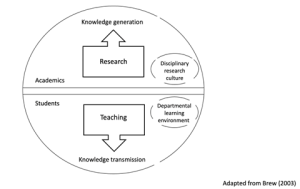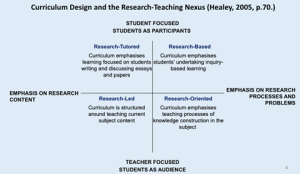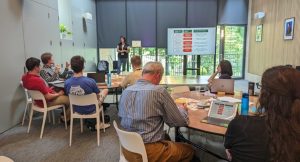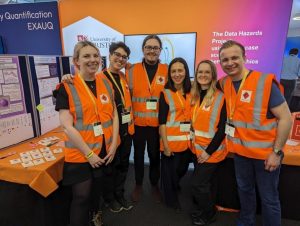
Reducing excessive bureaucracy is one of many improvements we can all agree with in principle, but it’s often hard to achieve in practice. We’re on a mission, with the help of many of our colleagues, to make it happen.
We strongly believe that all staff involved in research activity – academics, researchers, technicians and Professional Services colleagues – should feel enabled and supported when writing and submitting research applications, setting up projects, actually doing the research, and generating outputs.
What we did
It was with this focus on enabling and supporting that we commissioned an Internal Review of Research Bureaucracy in 2022. In part, this was in response to the UK Government’s Independent Review of Research Bureaucracy led by Adam Tickell, and reflects our desire to foster a positive research culture at Bristol.
The review was open to colleagues at all career stages and across academic departments and Professional Services, in order to identify procedures and processes that are perceived as unnecessary, inefficient and/or disproportionate. The methodology for our review was to hold discussion sessions, which were conducted between July and September 2022.
There were nine discussion groups, eight of which were face-to-face. Views were gathered from 60 staff in total. The outputs from the discussions were documented and analysed to identify topic areas, issues, themes and key examples.
We’re very grateful for the time that our colleagues put into these discussions, and the feedback we received from the independent facilitator that ran the sessions was that the tone was very positive and constructive.
What we learned
The majority of the discussions could be grouped into six key themes.
- General inefficiencies
- Standardisation, self-service, and a ‘one size fits all’ perception
- An emphasis on system working at the expense of working relationships
- A culture of compliance
- Proportionality (or a lack of it)
- A focus on income over impact
The full report is available on SharePoint (UoB staff access only) and has been shared with and read by the Senior Management Team.
We certainly recognize the themes that emerged, and we appreciate the insight that it has provided into the reality on the ground, despite our ongoing efforts to improve and streamline how we work.
The report provides us with valuable information that will both feed into existing efforts to reduce bureaucracy and identify new challenges that we need to address.
It’s also worth noting that the Tickell review identified seven principles to cut unnecessary bureaucracy. These are principles that we fully endorse, and that we will return to as we continue to improve and streamline how we work. The principles the review outlines are:
- Harmonisation: Reducing administration by using common processes to make core work easier.
- Simplification: Reducing process complexity as much as possible.
- Proportionality: Ensuring that burdens placed on researchers / institutions match the size of the risk or reward.
- Flexibility: Supporting and embracing excellence beyond narrow and traditionally defined parameters.
- Transparency: Communicating the rationale for systems that have a bureaucratic burden.
- Fairness: Supporting fairness in systems and processes.
- Sustainability: Reducing bureaucracy without destabilising, and whilst supporting long-term efficiencies.
What we’re doing
In practical terms, the work we’re doing that is either relevant to our own Internal Bureaucracy Review, or is in response to it, falls into three broad categories.
First, we are implementing practical change. For example, the University is in the middle of an extensive “End to End” review that aims to consolidate the entire research process (harmonisation and simplification from the Tickell review), from grant application to delivery (pre- and post-award). Several workshops have already been conducted as part of this involving researchers and Professional Services staff, and RED has plans in place to understand, for example, where bottlenecks exist in our processes per se and in particular the transition from pre- to post-award, e.g., setting up more complex projects (hiring staff, space, IT, budgeting…). The aim is to clarify why activities are needed and try to simplify them, or sometimes to remove them, and build shared approaches to our work (proportionality). We are also looking at the intent and purpose of our processes, asking questions such as: What is the risk? What’s the worst that can happen? How can we manage these proportionately?
Second, we are working towards longer-term cultural change. This includes work on management and leadership – in particular, to create a culture of leadership at all levels where we all feel empowered to make decisions locally. For example, if a process is acting as a barrier to our work, we should feel able to challenge it and even, if necessary (and with appropriate agreement – for example from a Head of School), temporarily circumvent it to get the job done. We also need to ensure that processes feel personal – one theme was recognising that whilst generic emails are used to provide resilience and continuity of service, we need to find ways to make the interaction responsive and personal. Other options, such as drop-in sessions in Schools so that academic staff can meet colleagues in RED, Finance and HR who support their work, may be one solution to this; it would also enable different services to provide more person-centric support. We need to ensure that we have a one-team ethos.
Third, we intend to continue listening and communicating. We have launched an Internal Review of Teaching Bureaucracy, given the valuable insights our first review gave us. This will be run in a very similar way to the first review, but with a different focus. We are also maintaining the Research Culture Dropbox, where anyone is able to send thoughts, concerns and suggestions, either anonymously or not.
We’ve also launched this Research Culture Blog to help us explain what we’re doing and the nature of and rationale for some of our processes, so that these can be better understood (transparency). Inevitably, we will still have to do some things that may feel bureaucratic, or at least burdensome, but hopefully by explaining the rationale the effort involved will at least feel worthwhile.
We are exploring the wider issue of our broader culture and decision-making at Bristol under the sponsorship of the Vice-Chancellor, including looking at how we can share more information and be more transparent about how we make strategic choices. This has been fed into the consultation on future academic and Professional Services governance and structures.
Next steps
Further workshops are planned to address the frustrations with setting up and running awards, requiring multiple needs to be addressed by several Professional Services teams working in a coordinated way.
We are scoping the possibility of a single virtual Research Office across multiple Professional Services functions, integrated with Schools and Faculties, which would be people-centred and facilitate sharing of best practices where needed – a “one-stop shop” for researchers.
Professor Marcus Munafò
Associate PVC Research Culture
Jon Hunt
Executive Director, Research and Enterprise











